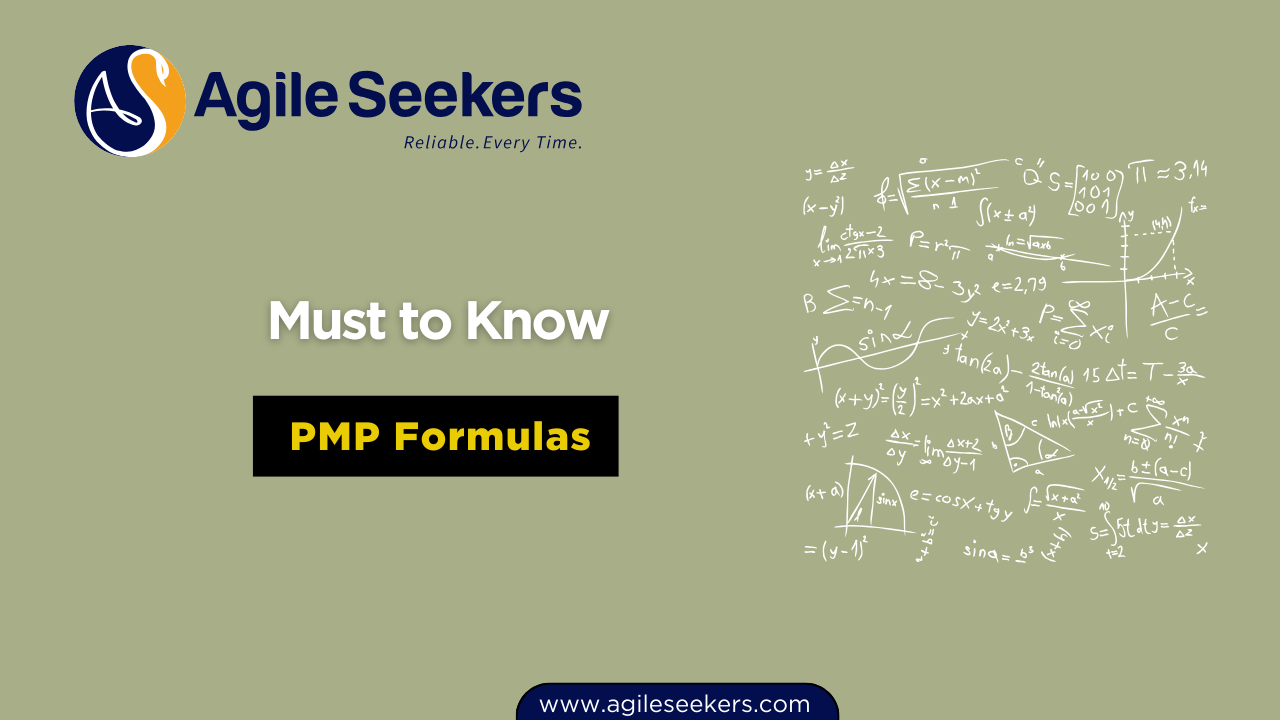8 PMP Formulas You Must Know to Pass the PMP Certification Exam

Understanding and applying PMP formulas correctly is one of the most important aspects of acing the PMP Certification Exam. Many aspirants find formula-based questions challenging, but with clarity and practice, these questions can become your scoring area.
In this guide, we’ll explain the most essential PMP formulas, what they mean, when to use them, and how they’re calculated. We’ll also give you examples to make sure the concepts are clear. By the end of this post, you’ll be confident about the math part of the exam.
If you're still preparing, consider enrolling in PMP certification training to strengthen both your conceptual and practical understanding.
Why PMP Formulas Matter
About 15–20% of the PMP exam includes questions that require calculations. These questions are typically straightforward but require a strong grasp of formulas. If you master them, you can answer these quickly and accurately, which gives you more time for conceptual or situational questions.
Categories of PMP Formulas
The PMP exam mainly covers formulas from the following areas:
- Earned Value Management (EVM)
- Forecasting
- Project Selection
- Communication Channels
- Risk Management
- Expected Monetary Value (EMV)
- Three-Point Estimating
- Resource Management
- Critical Path
1. Earned Value Management (EVM) Formulas
| Metric | Formula | Purpose |
|---|---|---|
| Planned Value (PV) | Planned % Complete × BAC | What should have been done |
| Earned Value (EV) | Actual % Complete × BAC | Work actually completed |
| Actual Cost (AC) | Total actual cost incurred | Money spent |
| Cost Variance (CV) | EV - AC | Cost performance |
| Schedule Variance (SV) | EV - PV | Schedule performance |
| Cost Performance Index (CPI) | EV / AC | Cost efficiency |
| Schedule Performance Index (SPI) | EV / PV | Schedule efficiency |
| Estimate at Completion (EAC) | BAC / CPI | Forecast final cost |
| Estimate to Complete (ETC) | EAC - AC | Cost to complete work |
| Variance at Completion (VAC) | BAC - EAC | Budget difference |
2. Forecasting Formulas
- EAC = BAC / CPI (If CPI is expected to continue)
- EAC = AC + (BAC - EV) (If original estimate is flawed)
- EAC = AC + [(BAC - EV) / (CPI x SPI)] (If both cost and schedule impact future)
- ETC = EAC - AC
- VAC = BAC - EAC
3. Project Selection Formulas
- Net Present Value (NPV): Choose project with higher NPV
- Benefit Cost Ratio (BCR): BCR = Benefit / Cost
- Internal Rate of Return (IRR): Higher IRR is better
- Payback Period: Time needed to recover the investment
4. Communication Channels
Formula: n(n - 1) / 2
Example: 6 people = 6(6-1)/2 = 15 channels
5. Risk Management: Probability and Impact
Formula: Risk Exposure = Probability × Impact
Example: If a risk has a 30% chance of occurring and would cost ₹40,000, then Exposure = 0.3 × 40,000 = ₹12,000
6. Expected Monetary Value (EMV)
Formula: EMV = Probability × Impact
Example: A 40% chance of gaining ₹1,00,000 results in EMV = 0.4 × 1,00,000 = ₹40,000
7. Three-Point Estimating
- Triangular Estimate: (Optimistic + Most Likely + Pessimistic) / 3
- PERT Estimate: (Optimistic + 4 × Most Likely + Pessimistic) / 6
- Standard Deviation: (Pessimistic - Optimistic) / 6
Example: O = 4, M = 6, P = 10
PERT = (4 + 4×6 + 10) / 6 = 38 / 6 = 6.33
8. Resource Management
Formula: Resource Utilization = Actual Time Worked / Available Time
This metric helps assess resource efficiency in a project.
9. Critical Path Method (CPM)
These formulas help determine project duration and identify critical activities.
- Float (Slack): Float = Late Start - Early Start OR Late Finish - Early Finish
- Critical Path: Path with zero float
- Total Duration: Sum of durations on the critical path
Tip: Use Forward Pass to calculate Early Start/Early Finish and Backward Pass for Late Start/Late Finish.
Tips to Remember PMP Formulas
- Group them by topic to study easier
- Create flashcards to test your memory
- Solve numerical questions to practice
- Write formulas in brain dump at exam start
Conclusion
Memorizing formulas is just the first step. You must understand when to apply them. PMP formula questions are typically direct, so mastering them gives you an edge.
If you're preparing for the exam, our PMP certification training program includes complete formula sessions, mock tests, and expert guidance.




















